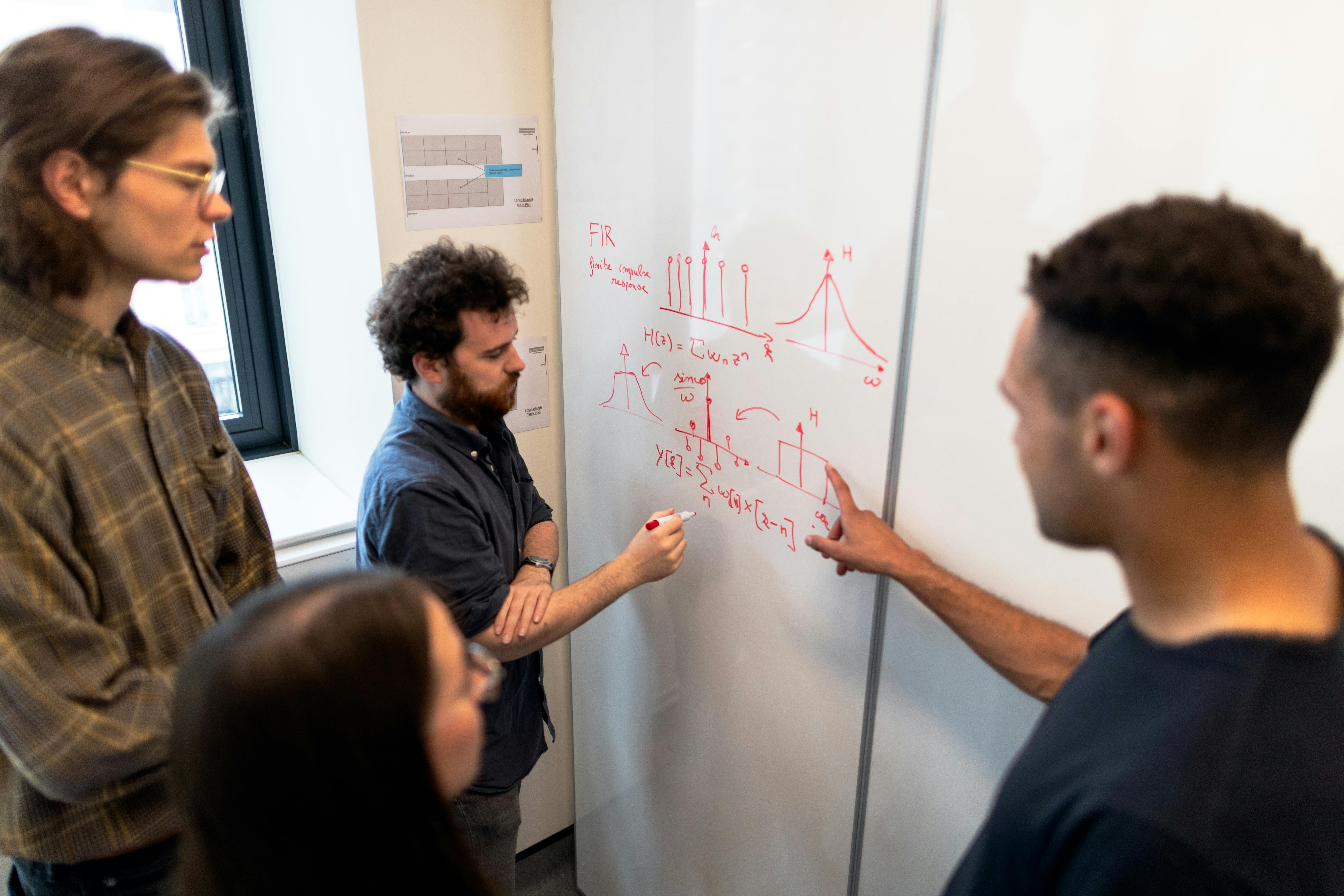Why optimizing for humans isn't enough when AI agents control the customer journey
Your prospects aren't disappearing. They're just not visiting your website anymore. And that should terrify you.
I was on a strategy call with a Fortune 500 CMO yesterday when she dropped this bombshell: "Our website traffic from Google is down 25%, but we can't figure out where our prospects are going."
I knew exactly where they went. They didn't go anywhere. They never left the AI.
Welcome to the era of zero-click customer journeys, where AI agents are becoming the new middlemen between your brand and your buyers—and most marketing teams are flying blind.
Here's the uncomfortable truth: You're now marketing to three different brains simultaneously.

While you've been perfecting your human-only customer journeys, here's what's been happening:
But here's the plot twist that changes everything: AI agents aren't just changing where people search. They're changing how the brain makes buying decisions.
And most marketers are optimizing for the wrong brain entirely.

For your entire career, you've been optimizing for one target: the human brain.
Now you're marketing to three different "brains" simultaneously, and each one processes information completely differently:
The Human Brain (System 1 + System 2)
The Algorithm Brain
The AI Agent Brain
The challenge? Each brain values completely different signals. And if you're invisible to any one of them, you're losing qualified prospects.

When ChatGPT or Claude evaluates your brand, they're not admiring your beautiful website design or clever copy. Here's what actually moves the needle:
Third-Party Validation Over Brand Claims
More than 90% of content in AI responses comes from third-party sources. Your "About Us" page means nothing.
Conversational, Rich Text
AI agents prefer blogs and explainers over webinars or image-heavy content. If it can't be copy-pasted, it doesn't exist.
Structured, Scannable Information
Ordered lists, definitions, and guides that AI can easily process and summarize. Think Wikipedia, not marketing brochure.
Fresh, Accurate Content
AI agents get confused by decade-old value propositions hiding in deep site indexes.
External Authority Signals
Publications, expert commentary, and forum discussions that validate your claims without you having to make them.
Want to see how this plays out in practice? Subscribe below for weekly insights on marketing to humans, algorithms, and AI agents simultaneously.
Here's where it gets fascinating: AI agents are changing how the human brain makes decisions, but the fundamental psychology remains exactly the same.
When someone asks ChatGPT "What's the best CRM for small businesses?" they're not just outsourcing research—they're outsourcing the cognitive load of System 2 thinking.
The AI does the rational comparison work, but the human brain still makes the final decision using System 1 processing.
Here's where it gets fascinating: AI agents are changing how the human brain makes decisions, but the fundamental psychology remains exactly the same.
When someone asks ChatGPT "What's the best CRM for small businesses?" they're not just outsourcing research—they're outsourcing the cognitive load of System 2 thinking.
The AI does the rational comparison work, but the human brain still makes the final decision using System 1 processing.
This Changes Everything:
A B2B software company came to us completely baffled. Their traditional SEO was crushing it, their content marketing was on point, but qualified leads were dropping like flies.
The problem: When prospects asked AI agents about their category, the company simply didn't appear. Not because their product sucked, but because their content was optimized for the wrong brain.
What we discovered:
The Circle & Square solution:
We redesigned their content architecture for all three brains:
Result: 40% increase in qualified pipeline within 90 days as AI agents began recommending them consistently.
Their CMO literally said, "It's like we became visible again."
Here's the scary part: Conversion rates through AI-powered search are already closing the gap with traditional discovery paths—and can be twice as high for certain customer journeys.
Translation: The companies that figure this out first will capture disproportionate market share while competitors remain invisible to AI-mediated buyers.
But most marketing teams are making a critical mistake: They're optimizing for AI agents without understanding how humans actually process AI recommendations.

This is where our approach becomes your competitive edge. While everyone else optimizes for AI visibility, we optimize for AI-mediated persuasion.
Here's what that means:
Design for AI-Human Handoff Moments
When AI presents your brand to a human, what psychological triggers fire? Trust? Uncertainty? Competence?
Optimize Third-Party Content for Emotional Resonance
The reviews and articles AI agents cite need to create the right subconscious associations with your brand.
Structure Information for Both Processing Types
AI agents need scannable data, but humans need emotional context. Layer both.
Build Trust Through AI Transparency
When humans know an AI recommended you, what builds or erodes confidence in that recommendation?
This isn't just about getting mentioned by AI agents—it's about optimizing for the entire psychology of AI-mediated buying decisions. Here's how to execute the Circle & Square approach across your marketing stack:

For AI Agent Optimization:
1. Audit Your AI Visibility (Weekly)
Search your brand using tools like Gumshoe.ai, Otterly.ai, or simply test manually across ChatGPT, Claude, Perplexity, and Gemini. Track mentions, context, and ranking vs competitors.
But here's the kicker: Don't just search for your brand name. Ask like your actual users would. Use synthetic user platforms to help you come up with legit questions in their language, their words. Instead of "best CRM software," try "what's the cheapest CRM that won't make my sales team hate me?"
2. Content That AI Agents Actually Want to Read
3. Structure That Won't Break AI Brains
4. Technical Stuff That Actually Matters
5. Strategy That Goes Beyond "Check if We're Mentioned"
1. Optimize for Third-Party Validation Encourage customer discussions in forums, professional networks, and review sites — where AI agents look for validation.
2. Design Post-AI Conversion Experiences When AI sends someone to you, what reinforces their confidence in the recommendation?
3. Test AI-Human Handoff Messaging “As recommended by AI” vs “Trusted by experts” — what builds more confidence?
4. Optimize for Recognition, Not Recall AI agents handle the “remembering” — focus on instant credibility when prospects arrive.
10. Track New Metrics That Matter
11. Create Content for All Three Brains
Every piece should work for human emotion, algorithm discovery, and AI processing.
12. Test Across AI Platforms
Different AI agents weight different factors — diversify your optimization approach.
13. Build Measurement Frameworks
Traditional attribution is broken in an AI-mediated world. Track the new customer journey.
Short-term (Next 90 Days):
Medium-term (6–12 Months):
Long-term (12+ Months):
While your competitors choose between AI optimization OR human psychology, Circle & Square masters both.
The marketing leaders who understand how to design for AI agents AND the human brain will dominate the next decade of customer acquisition.
This isn’t just about staying visible — it’s about staying persuasive in an AI-mediated world.
The question is: Will you be leading this shift, or catching up to it?
My AI Visibility Freebie to You: Send me your brand and top 3 competitors, and I’ll show you exactly how your brand appears across major AI platforms PLUS give you the real user questions (in their language) that you should be testing. But only if you reply and tell me which part of this article made you go “oh shit.” Get your AI visibility assessment here.
The Triple-Brain Quiz: Think your marketing works for humans, algorithms, AND AI agents? This 5-minute assessment will reveal exactly where you’re losing qualified prospects. Coming soon — want early access? Join the waitlist.
Stay Ahead of the AI Curve: Join 3,000+ marketing leaders getting weekly insights on marketing to humans, algorithms, and AI agents. Recent topic: “Why ChatGPT hates your value proposition.” Subscribe to The NeuroCX Newsletter.
Ready to Go Full Triple-Brain? Let’s audit your entire marketing strategy for human psychology, traditional SEO, and AI agent optimization. I’ll show you exactly where each brain is working against the others. Book a strategic conversation.
Because in the age of AI agents, the brands that understand both artificial intelligence and human psychology will own the customer journey.
What’s your biggest concern about AI agents changing customer behavior? Reply and let me know — I’m tracking the most common challenges for future deep dives.
If this opened your eyes to the triple-brain marketing challenge, share it with a marketing leader who’s wondering where their website traffic went.
